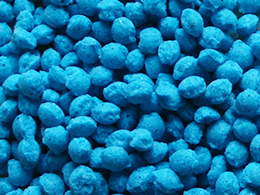Fertilizer Production Line
Let’s Start Work
Together
Please feel free to contact us. We will get back to you with 1-2 business days. Or just call us now.


Roller Press Granulator Production Line
The roller extrusion granulator production line is a production system specifically designed to produce high-strength, uniformly sized particles from powdered or fine-grained materials through high-pressure extrusion technology. This production line is widely used in various industries such as chemical, fertilizer, pharmaceutical, and food, especially suitable for situations where high-strength particles need to be prepared.
Equipment Composition
Raw material pretreatment equipment: including a crusher and a screening machine, used to crush raw materials to a particle size suitable for granulation and screen to remove impurities.
Roller squeezing granulator: The core equipment applies high pressure to the raw materials through two relatively rotating rollers, squeezing them into strips or sheets, and then cutting them into particles through a granulator.
Crusher (optional): Used to process larger lumps generated during the extrusion process, breaking them into smaller particles.
Screening machine: Screen the particles after granulation to remove unqualified particles (too large or too small) to ensure the consistency of product particle size.
Packaging equipment: Automatic packaging machine, used to weigh and package finished granules.
Control system: including PLC control system and automation instruments, used to monitor and adjust key parameters in the production process, such as raw material ratio, extrusion pressure, particle size, etc., to ensure the efficient operation of the production line.
Granulation process
1. Raw material pretreatment
Raw material crushing: The raw material is sent to a crusher and crushed to a particle size suitable for granulation, ensuring uniformity of the raw material and facilitating subsequent extrusion granulation.
Screening: Use a screening machine to remove impurities and oversized particles from the raw materials, ensuring consistency and purity of the raw materials.
2. Raw material mixing (optional)
Mix different raw materials in a certain proportion as needed to ensure the stability of the product composition after granulation.
3. Humidity adjustment (optional)
Some raw materials may need to be adjusted for humidity before extrusion to improve the extrusion effect. The raw materials can reach the best extrusion state through the spray system or by mixing water.
4. Roll extrusion granulation
Feed: Feed the pre treated raw materials into the feed inlet of the roller extrusion granulator.
Squeezing: The raw material passes between two pairs of rotating rollers and is compressed into strips or sheets under high pressure.
Granulation: The strip or sheet material that comes out of the roller extruder is immediately fed into the granulator and cut into particles of a predetermined size.
5. Crushing and screening
Crushing: For larger lumps that may occur during the extrusion process, use a crusher to break them into smaller particles.
Screening: Use a screening machine to select particles that meet the particle size requirements, remove unqualified particles, and ensure the consistency of product particle size.
6. Drying (optional)
If the moisture content in the raw materials or granulation process is high, it may be necessary to remove excess moisture through a dryer to improve the stability of the particles.
7. Cooling (optional)
After granulation, the particles may need to be cooled by a cooling system to prevent deformation or adhesion caused by high temperatures.
8. Packaging
Finished product inspection: Conduct quality inspection on the granules after granulation to ensure that the product meets the standards.
Automatic packaging: Use an automatic packaging machine to weigh and package qualified particles, preparing them for storage or shipment.
9. Control and Monitoring
Automation control: The entire production line is usually equipped with advanced PLC control systems and automation instruments to monitor and adjust key parameters in the production process, such as raw material ratio, extrusion pressure, particle size, etc., to ensure efficient operation of the production line and product quality.
Process characteristics
- High strength particles: Through high-pressure extrusion, the granulator can produce particles with high density and strength, suitable for applications that require high mechanical strength and durability.
- Uniform particle size: The roller extrusion granulator can produce particles with uniform particle size, improving product consistency and performance.
- Wide adaptability of raw materials: The production line can handle a variety of raw materials, including but not limited to fertilizers, pesticides, feed additives, chemical raw materials, etc., with strong adaptability.
- Energy saving and efficient: Compared with other granulation methods, the roller extrusion granulation process has lower energy consumption, higher production efficiency, and is easy to operate.
- Environmental Protection: The design of the production line focuses on dust control and noise reduction, reducing environmental pollution during the production process.
- High degree of automation: Production lines are usually equipped with advanced automation control systems, which can achieve full automation from raw material processing to finished product packaging, reduce manual operations, and improve production efficiency and product stability.





